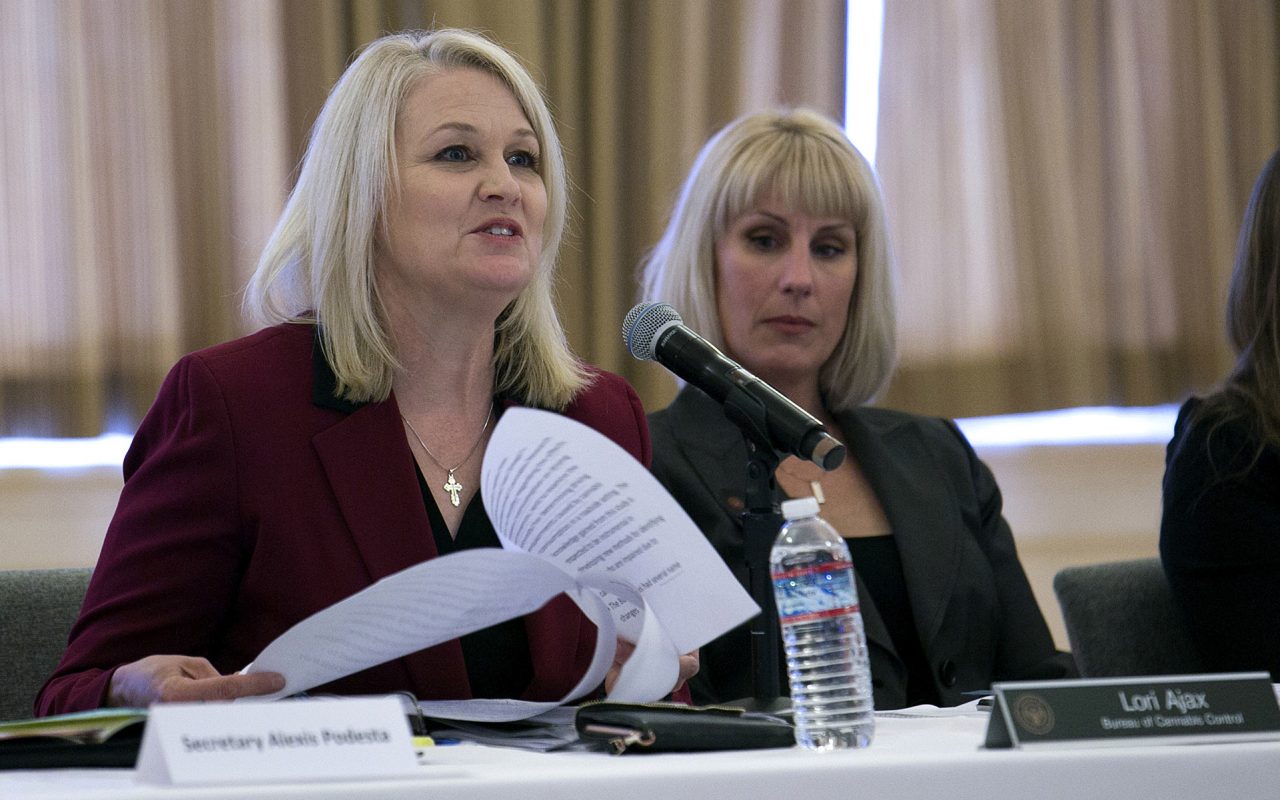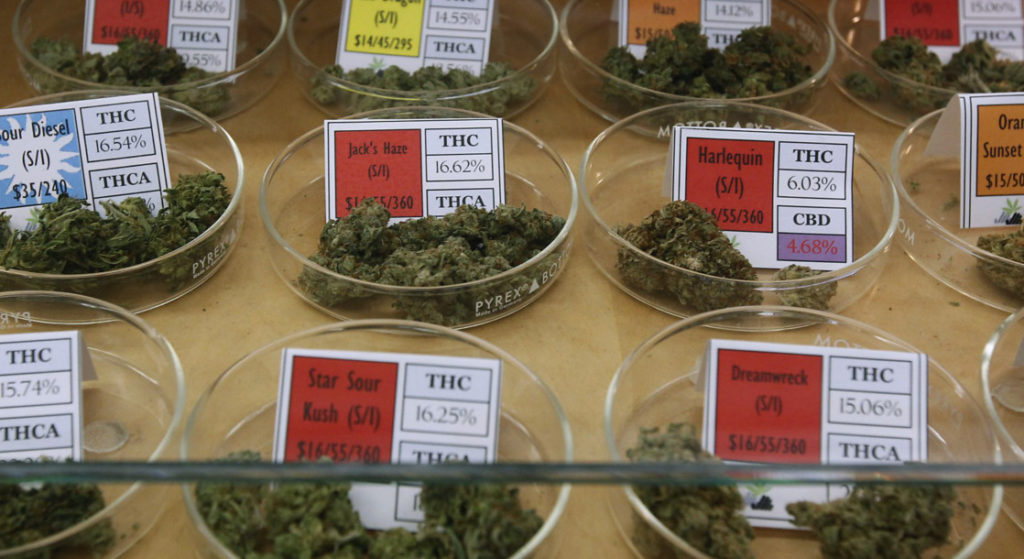California is racing toward the launch of a state-regulated cannabis market, with sales set to begin Jan. 1 despite a number of unanswered questions.
On Thursday, with less than a month and a half before the program is slated to be up and running, state regulators unveiled a long-awaited package of emergency rules that will guide the industry through the transition ahead. We’re poring over those documents and will update this page with key takeaways from the newly released guidelines.
Product Limits
Bad news for medical patients or consumers who prefer high-potency edibles: The state will limit the serving-size of edibles to 10 milligrams of THC, with no more than 100 mg allowed in a single product package. While those limits are consistent with other states’ restrictions on adult-use edibles, most other states allow greater amounts of THC in products for the medical market.
Edibles will also be limited by shape-no human beings, animals, insects, or fruit-in an effort prevent making them appeal to children.
For non-edible cannabis products, such as tinctures, concentrates, and topicals, the state is setting separate limits on medical or adult-use products. Those on the adult-use market can contain up to 1,000 mg of THC per package, while medical products can contain twice as much (2,000 mg).
Products are also barred from containing nicotine, added caffeine, or-except in the case of tinctures-alcohol. Perishable products other than beverages are also prohibited. Products can’t contain seafood, nor can they have dairy other than butter purchased from a licensed entity. Low-acid canned goods are also off-limits. And all products need to carry the state’s cannabis warning label.
Purchase Limits
The state is imposing limits on the amount of cannabis a consumer or medical patient can purchase from a single retail retailer in a single day.
On the adult-use side, customers can buy up to 28.5 grams (one ounce) of non-concentrated cannabis, eight grams of concentrate, and six immature plants. Medical patients will have higher limit: eight ounces of cannabis. If a valid physician’s recommendation contains a different amount, medical patients can purchase an amount consistent with the doctor’s recommendation.
Gifts and product giveaways are not allowed on the adult use side. They are allowed, under certain circumstances, for medical cannabis patients. This is a recognition by state regulators that many veterans, lower-income patients, and others have and should benefit from lower-cost or free medicine.
Retail Restrictions
Retail stores can operate between the hours of 6 a.m. and 10 p.m.-great news for early birds, not so much for night owls. Delivery is allowed, but only by a delivery employee of a licensed retailer. And no drones or bicycle deliveries for now-regulations allow deliveries made in enclosed automobiles only.
Retail stores and medical dispensaries will need to be at least 600 feet from a K-12 school, day care center, or youth center in existence when the license issued. Cannabis window displays are forbidden, and interior displays must not be visible to the outside public. Keep in mind that cities and counties are able to impose further restrictions.
Product Testing
Under the new regulatory scheme, cannabis products will need to be tested to measure the following: cannabinoids, (THC, CBD, and others), foreign material, heavy metals, microbial impurities, mycotoxins, moisture content and water activity, residual pesticides, residual solvents and processing chemicals, and terpenoids.
Edibles are also to be tested to make sure that concentrations of THC and CBD are spread evenly across the servings in a product package.
If the results of the test meet state standards, the products can be sold. If they fail, the products can be “additionally processed for remediation” and tested again. This can be done twice-if a product fails after being remediated twice, the entire batch is to be destroyed.
Testing standards are designed to become more and more strict over the first year of legal sales. Initially, samples will be tested only for potency and contaminants that pose a “high public health risk.” By the end of the year, testing for contaminants that pose even “minor relative health risks” will kick in. In recent years, home testing has become a popular form of testing the overall components of cannabis. Many cannabis users have found that it can give them peace of mind, as it can prove the product’s quality. You can read more about cannabis testing by checking out this HERBCEO home testing guide for more information.
Temporary Licenses
Regulators have said they’ll begin issuing temporary licenses to qualifying businesses on Jan. 1. These licenses will allow operators to engage in commercial cannabis activity for 120 days, and they may be extended.
Key to obtaining a temporary license is demonstrating local authorization. That means holding a valid license, permit, or “other authorization” issued by the jurisdiction where the business operates. Lori Ajax, the state’s chief cannabis regulator, said Thursday that the state “is being very flexible” on what that authorization looks like.
The bureau says that if the applicant provides proof of that authorization, state officials will contact the local jurisdiction to verify the information and will give at least 10 days for the jurisdiction to respond before issuing the license. If the applicant does not provide authorization, state officials will still contact the local jurisdiction to verify. If they don’t hear back in 60 days, “the Bureau shall presume the applicant is in compliance and may issue a license.”
There is no fee for temporary licenses. “That’s supposed to make everybody happy,” Ajax joked.
Six-Month Transition Period
During the interim period from Jan. 1 to July 1, 2018, period, licenses are permitted to do the following:
- Conduct business with other licensees irrespective of the M or A designation on their license.
- Sell non-child res products IF placed in child-res package at time of sale.
- Sell non-lab tested products if has sticker that says not been tested.
- Retailers may package dry flower for sale themselves.
Temporary licensees won’t be required to use the state’s track-and-trace system but will need to complete manifests and other paperwork to keep track of cannabis products. Applicants for annual licenses, however, will need to complete a training and register for the track-and-trace system.
Annual License Fees
Buying into California’s legal cannabis market ain’t cheap. Annual fees for some licenses start as low as $800, while others run as high as $120,000. (Remember, these are fees for annual operating licenses, not temporary ones.) Officials said Thursday the fees reflect the costs of administering the program.
That “Operations” column is a little tricky to determine. The rules instruct the applicant to “estimate the maximum dollar value of its planned operation in terms of the value of the product expected to be tested, distributed, transported, retailed, and/or manufactured.”
The state will also charge fees to license events involving cannabis.
In addition to those license fees, there are also license application fees-small fees that allow you to apply to pay the larger fee:
- Annual license application fee: $1,000
- Cannabis event organizer license: $1,000
- Temporary cannabis event license: $1,000
Who’s An Owner?
The language here remains murky. The state Bureau of Cannabis Control (BCC) says “owners” must submit fingerprints and background information including any past criminal convictions. But who’s an owner? Depends. The BCC defines an owner as anybody who holds at least 20% aggregate ownership interest in a commercial cannabis business; a company’s CEO or member of the board of a non-profit; and anyone participating in the direction, control, or management of the company applying for a license.
The 20% interest definition seems clear. In its materials, the BCC has put the public in an Eats, Shoots & Leaves pickle with that second clause, though. Are all CEOs and board members considered “owners,” or only those in non-profit organizations? Finally, “anyone participating in the direction, control, or management” of a company could potentially encompass a lot of employees within that company. So this will require some further definition from the BCC.
License Types: A and M
A license holder must hold an A-license to engage in adult use commercial cannabis activity, and an M-license to engage in medical cannabis activity. Testing labs may test cannabis goods for both types of licenses. It’s unclear whether a medical dispensary that wants to serve adult-use customers will have to obtain separate A and M licenses (and pay separate hefty annual license fees for both) or a combined A and M license.
Union Rules
License applicants with more than 20 employees must attest that they’ve entered into a labor peace agreement, and provide a copy to the Bureau of Cannabis Control. (A labor peace agreement is a neutrality agreement between a company and union(s) in which the employer agrees not to resist organizing attempts by its workers.) If no such agreement exists, the license applicant will have to provide a notarized statement indicating that the company will enter into a labor peace agreement.
Emergency Medicinal and Adult-Use Cannabis Regulations
The Bureau of Cannabis Control released the following package of documents on its website:
- Notice – Emergency Rulemaking Action Medicinal and Adult-Use Cannabis Regulation
- Finding of Emergency Medicinal and Adult-Use Cannabis Regulation
- Bureau Proposed Text of Regulations Medicinal and Adult-Use Cannabis Regulation
- Bureau of Cannabis Control Disciplinary Guidelines November 2017
- Bureau Emergency Medicinal and Adult-Use Regulation Fact Sheet
- Department of Food and Agriculture Text of Proposed Emergency Regulations
- Department of Food and Agriculture Medicinal and Adult-Use Regulation Fact Sheet
- Department of Public Health Proposed Text of Regulations
- Department of Public Health Medicinal and Adult-Use Regulation Fact Sheet .
credit:420intel.com




